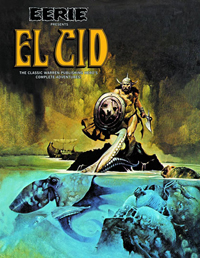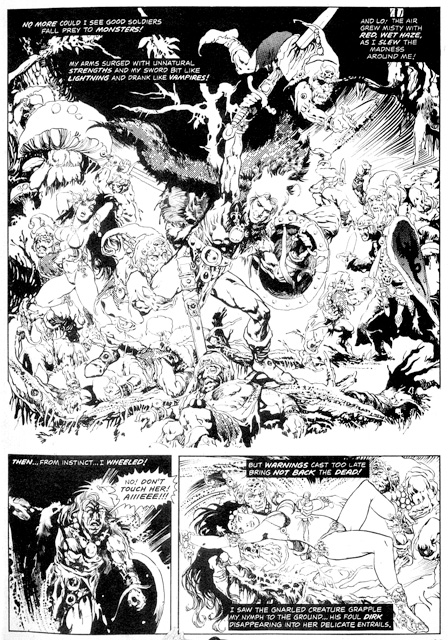For almost 80 years, Kirkus Reviews has served as the industry bible for bookstore buyers, librarians, and ordinary readers alike. Now Popdose joins the Kirkus Book Bloggers Network to explore the best — and sometimes the worst — in pop-culture and celebrity books.
This week, we look at on e of the strangest heroes to emerge from a neglected era in comics history…
 After the congressional hearings of the 1950s that saw comic books blamed for contributing to juvenile delinquency, the comics industry spent the better part of two decades churning out kid-friendly material under a rigid code of self-censorship. It was not until the mid-1970s that American comics dared again to try and cultivate an adult audience. Several publishers experimented with oversized black-and-white comics magazines; free from the restrictions of the Comics Code Authority, the black-and-whites could explore more mature themes and approaches than the four-color funnybooks.
After the congressional hearings of the 1950s that saw comic books blamed for contributing to juvenile delinquency, the comics industry spent the better part of two decades churning out kid-friendly material under a rigid code of self-censorship. It was not until the mid-1970s that American comics dared again to try and cultivate an adult audience. Several publishers experimented with oversized black-and-white comics magazines; free from the restrictions of the Comics Code Authority, the black-and-whites could explore more mature themes and approaches than the four-color funnybooks.
The results were mixed — in practice, ”mature” usually translated as ”gore and titties” — but at their best the black-and-whites hearkened back to the pulp roots of comics, recapturing some of the dank, nasty energy of the old ”men’s adventure” magazines. Indeed, many pulp characters were being revived for comics in this period — Doc Savage, the Shadow, and Tarzan among them. The most successful character to make the leap was Conan the Barbarian, who brought great fortune to Marvel Comics as the star of both the eponymous PG-rated color comic book and the hard-R black-and-white spin-off Savage Sword of Conan.
Now, in comics, as in any artform, innovation engenders imitation; and soon every publisher was scrambling to market a sword-and-sorcery hero of its very own. One of the best of the Conan-na-bes — and certainly the strangest — was El Cid, who appeared in the pages of Warren Publishing’s Eerie magazine, and whose adventures are collected in the new hardcover Eerie Presents El Cid.
El Cid — rather inconveniently for a prospective fantasy hero — was a real person; not a shadowy quasi-historical figure like Robin Hood or King Arthur, but a genuine, documented 11th Century Spanish nobleman named Rodrigo Diaz de Vivar. A brilliant military commander, the Cid (an Arabic title translating roughly as ”warlord”) was Spain’s great patriotic hero. He settled a bloody civil war by swearing allegiance to the claimant to the throne — only to be rewarded with exile; he was a Christian who fought to free his country from Moorish conquerors, who went on to lead an army of both Christian and Spanish-born Muslims against foreign invasion.

A fascinating career, to be sure. But at first blush the Cid is an unlikely candidate for a makeover as the poor man’s Conan. Although elements of legend have attached themselves to the story of Rodrigo Diaz de Vivar, there’s nothing of the supernatural about him. There are plenty of swords, but no sorcery; no tales of him slaying dragons or bedding sea nymphs, or storming the gates of Hell — all things that happen in the stories collected in Eerie Presents El Cid.
Read the rest of this article at Kirkus Reviews!





Comments